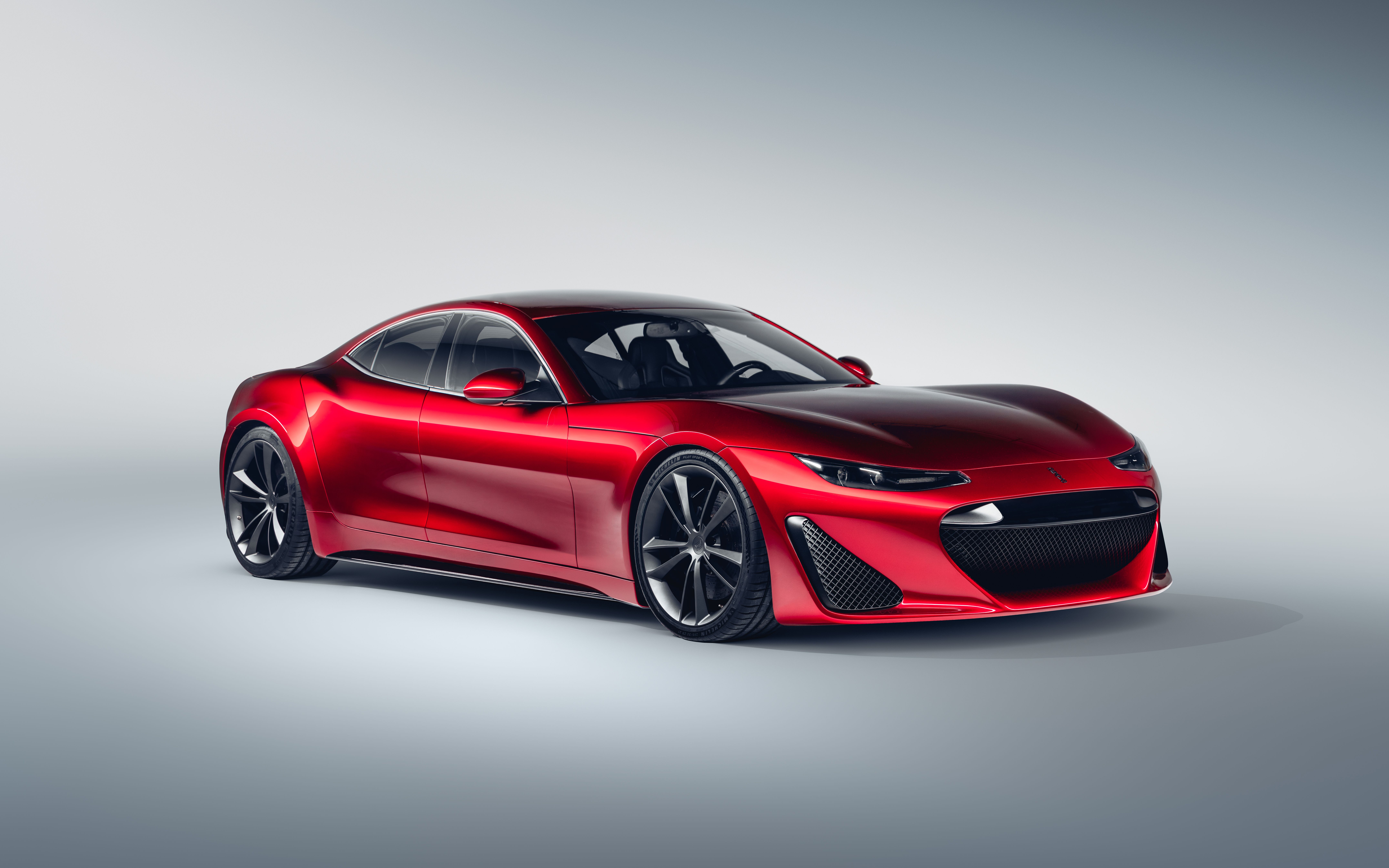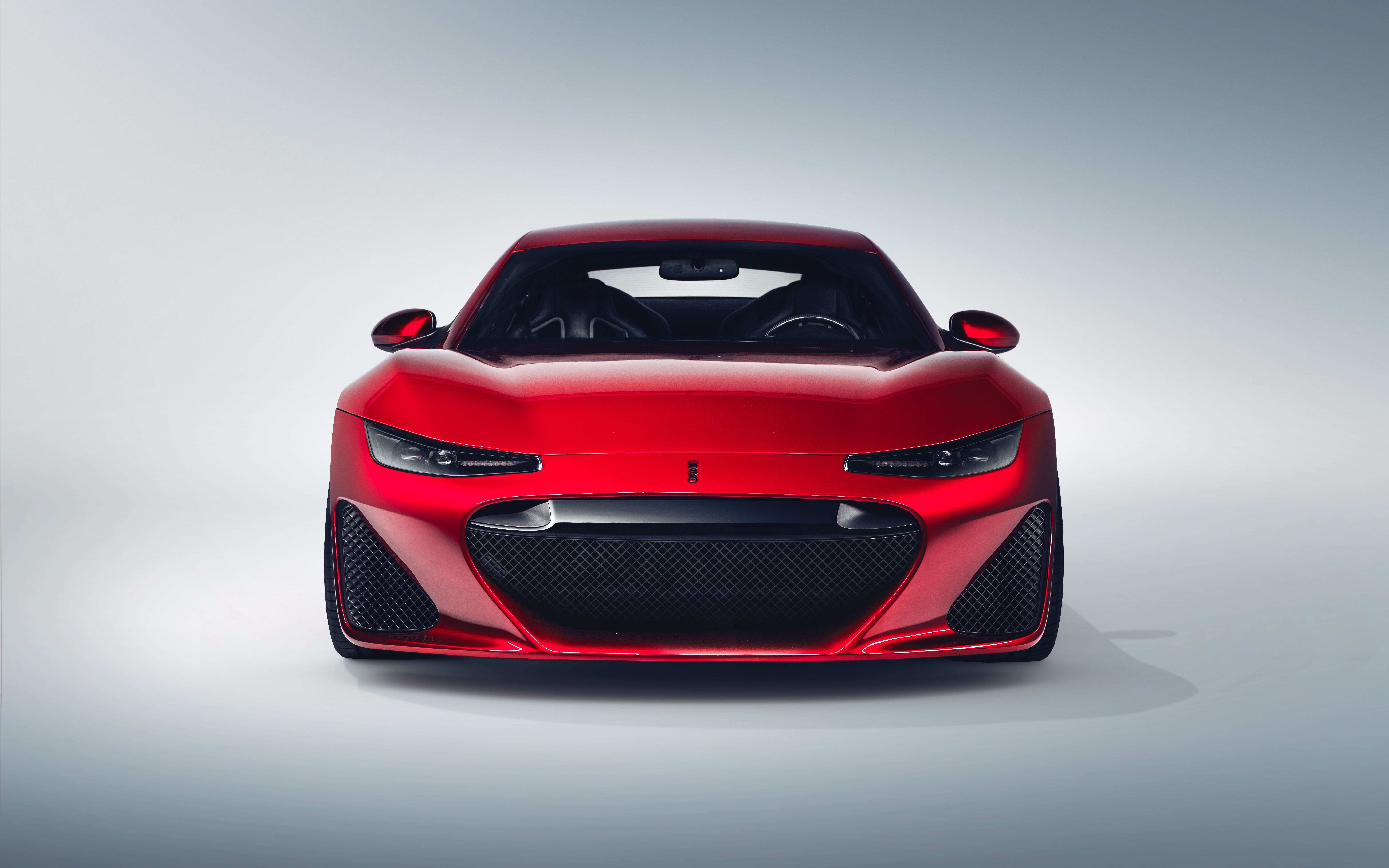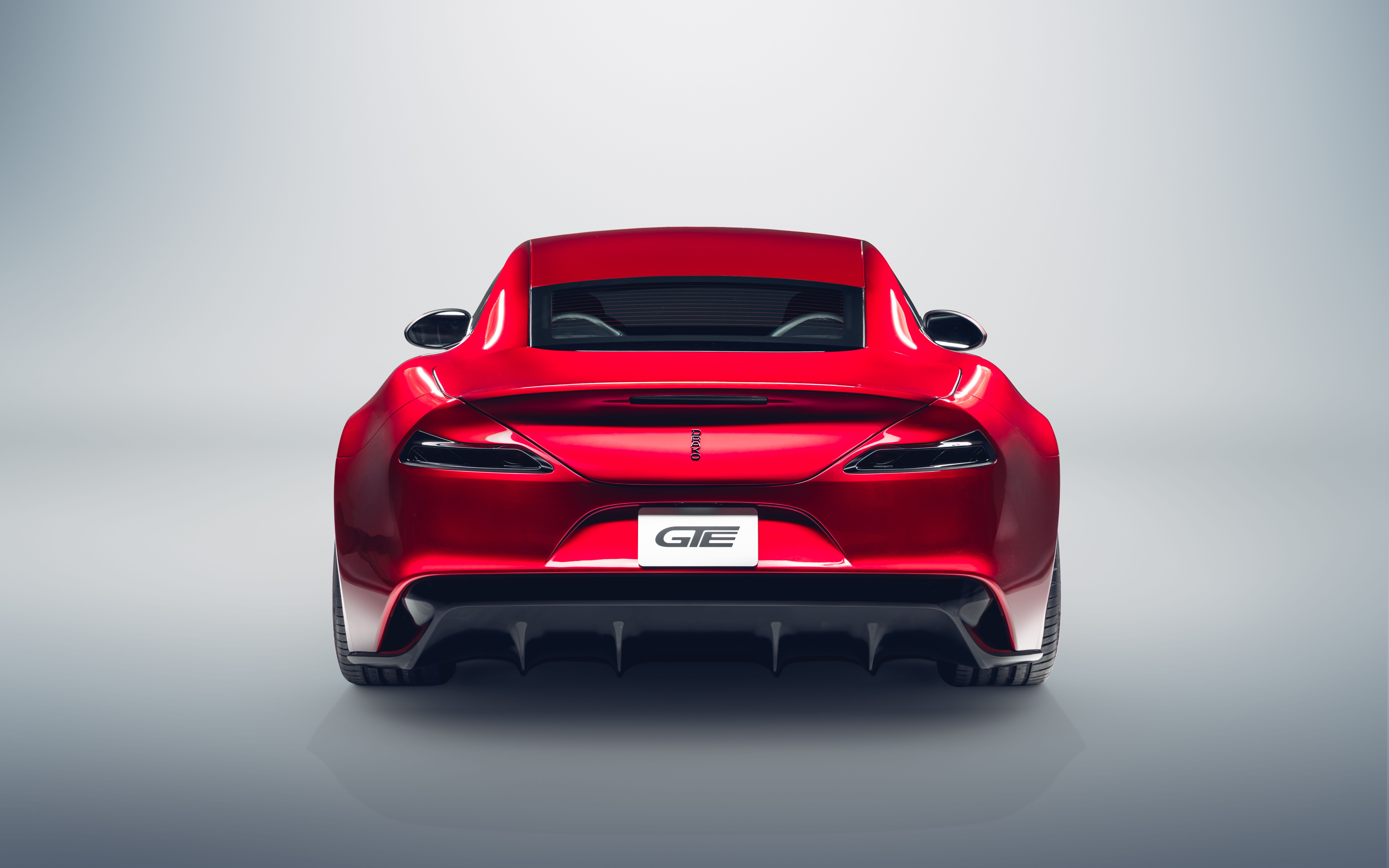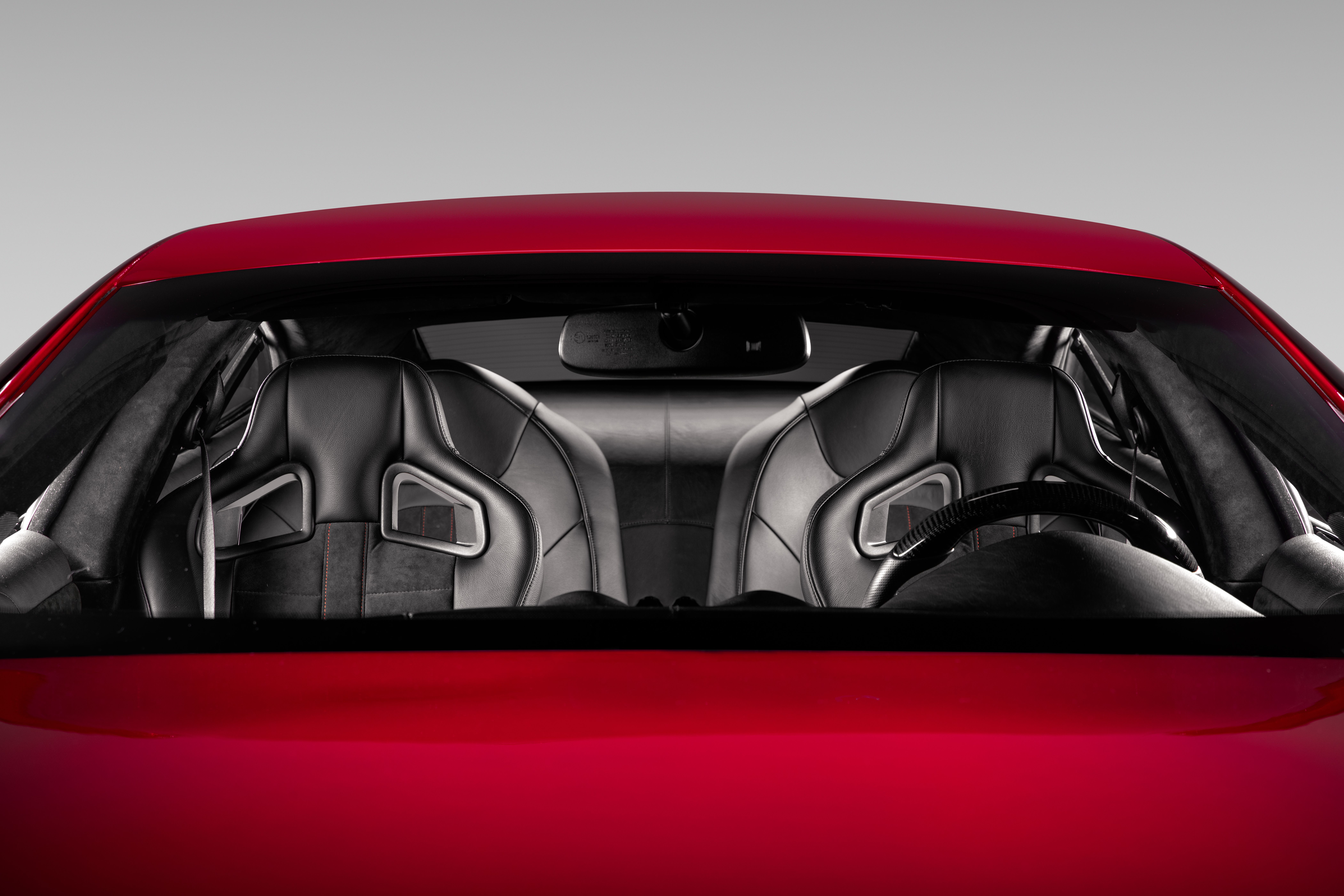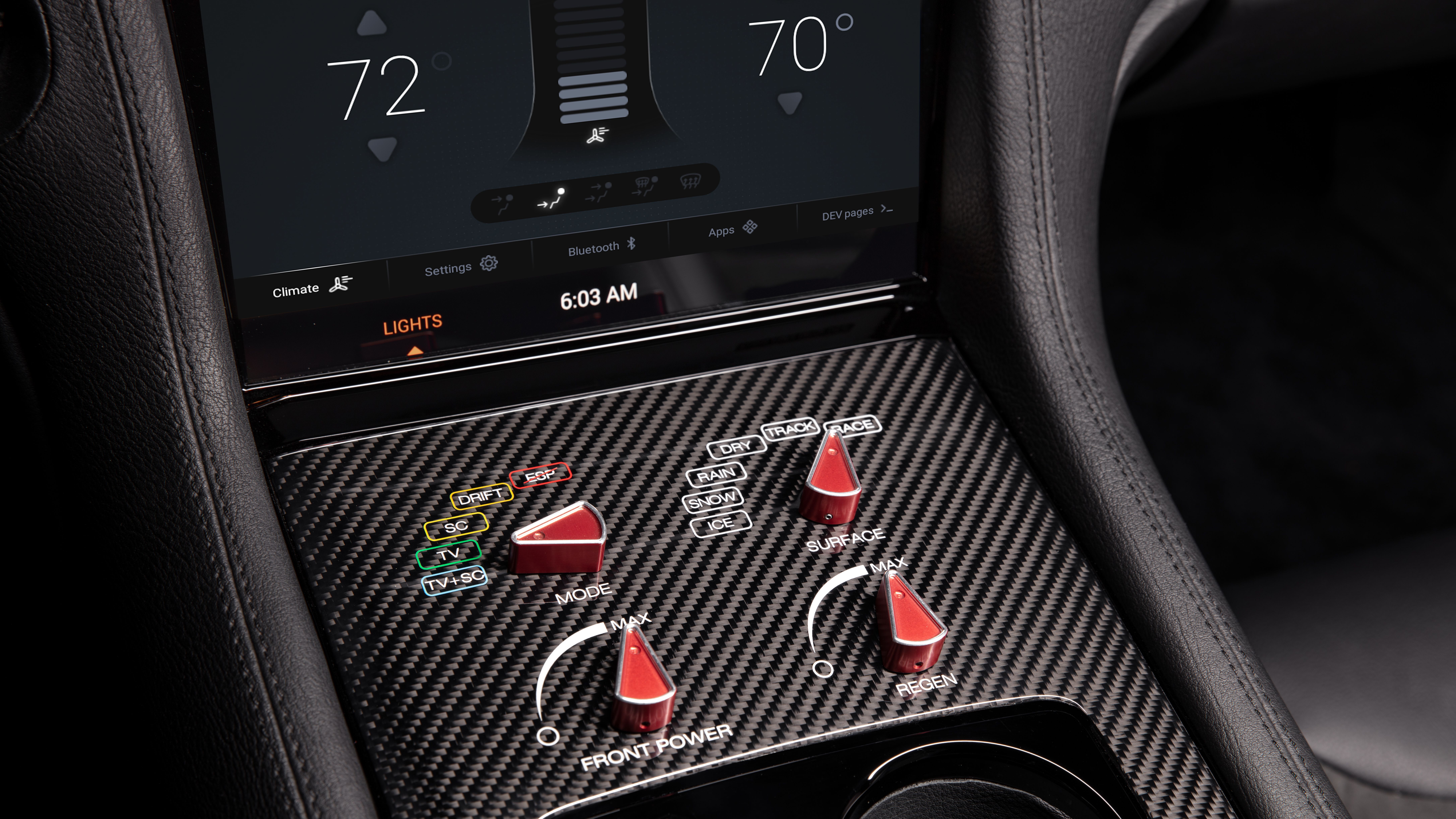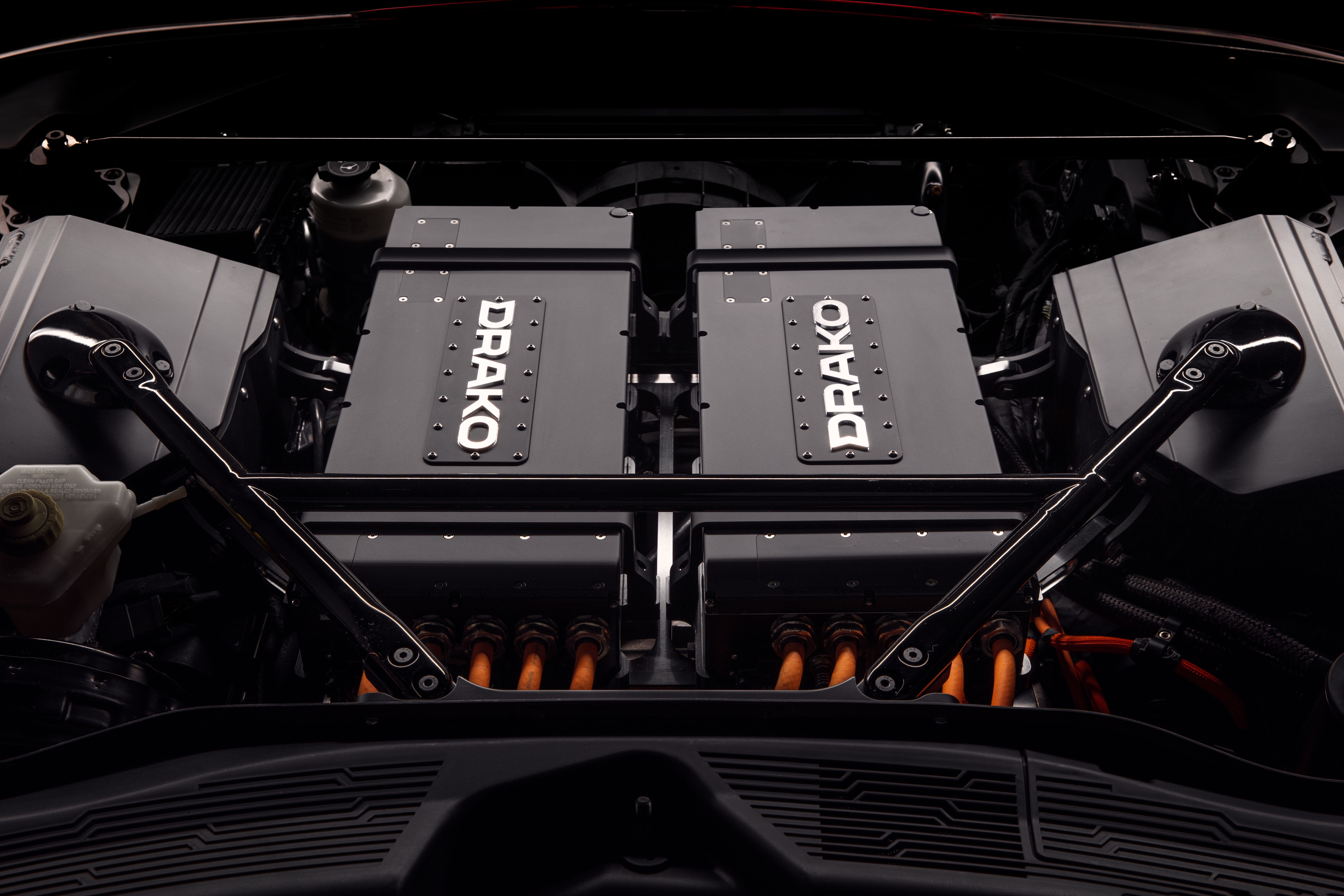With electrification gaining a strong foothold in the car industry, we’re bound to see an increase in the number of supercars that harness the power generated by a battery pack and a pair of e-motors.
Drako’s GTE ups the ante with a quad-motor setup and the complete lack of differentials. Instead, the supercar uses a smart algorithm that sends just the right amount of torque and power to each wheel, for what Drako calls the ultimate driving experience. Let’s see what that means, shall we?
2020 Drako GTE
- Make: Array
- Model: 2020 Drako GTE
- [do not use] Vehicle Model: Array
<
Exterior
There’s no doubt at this point that the Drako GTE is one good looking automobile.
As with every supercar out there, the body must serve the aesthetic purpose as well as the functional one.
Interior
Drivetrain
The Drako GTE might be Drako Motors’ first-ever car, but it’s been hailed as a limited-production electric supercar from day one. Although the initial press release stated that the GTE is based on a Fisker-supplied chassis, the air has been cleared as a Fisker representative came out to deny that. Needless to say, the specs announced by Drako Motors for the GTE are otherworldly.
Drako GTE Performance Specifications
|
Powertrain |
Four permanent magnet hybrid synchronous motors (225 kW each) |
|---|---|
|
Transmission |
Four direct drive gearboxes |
|
Reduction Ratio |
5.56:1 |
|
Horsepower |
1,200 hp |
|
Wheel Torque |
6,500 ft-lbs / 8,880 NM |
|
Top Speed |
206 mph |
|
Battery Energy |
90 kWh |
|
Battery Voltage |
450V |
|
Battery Amperage |
2200A peak / 1800A continuous |
|
Battery Cooling |
Massively parallel cooling architecture |
|
AC Charging |
15 kW with onboard charger |
|
DC Fast Charging |
150 kW |
|
Charging Protocols |
Compatible with current widely available EV charging infrastructure: J1772, CCS, Chademo |
|
Track Package Battery |
Track optimized battery |
|
Suspension |
Öhlins TTX 36 |
|
Track Edition Suspension |
Öhlins four-way adjustable track suspension |
|
Brakes |
Brembo Carbon Ceramic |
|
Front Brakes: |
6 piston caliper, 395 mm x 36 mm carbon ceramic rotor |
|
Rear Brakes: |
4 piston caliper, 395 mm x 32 mm carbon ceramic rotor |
|
Wheels Road Package: |
21 inch monoblock forged one piece wheels |
|
Wheels Track Package: |
20 inch lightweight three piece forged wheels |
|
Tires Road Package: |
Michelin Pilot Sport 4S tires (Front: 295/30/21; Rear: 315/30/21) |
|
Tires Track Package: |
Michelin Pilot Sport Cup 2 tires (Front: 285/35/20;Rear: 305/30/20) |
Having one e-motor assigned to each wheel translates into extremely precise torque control on a given wheel, so the setup can instantly adapt to the levels of grip it gets from the surface it travels on. What’s more, Drako says the GTE’s torque vectoring algorithms have been forged in the Nurburgring fire and address the likes of straight-line acceleration and “unrivaled turning capability and incredible safety on any kind of road surface.” There’s no word on a 0-60 mph sprint time, but we expect the Drako GTE to pull off sub-2-second runs given the generous resources it has at its disposal, and the trumpeted ability to put them to good use in an efficient manner.
Speaking of putting the power down with performance in mind, Drako Motors explains that since the GTE ditches the traditional differentials in favor of a super-sophisticated software that handles torque deployment, it offers superior performance in demanding situations, aka on the race track. The way this fancy system works is by applying positive torque to the wheels on the outside of the turn, while simultaneously sending negative torque to the wheels on the inside of the turn. These minor adjustments can be made with a frequency of up to 1,000 times per second, according to Drako. In addition, the driver can select one of the six drivetrain modes tailored for use in various weather and road conditions: Ice, Snow, Rain, Dry, Track, and Race.
What we covered so far is the base GTE.
-* 20-inch lightweight forged wheels
-* Brembo carbon-ceramic brakes (6 pistons front, 4 pistons rear)
-* Michelin Pilot Sport Cup 2 tires (285/35/20 front, 305/30/20 rear)
-* track-tuned, four-way adjustable suspension with Ohlins dampers
-* carbon fiber composite panels
-* aluminum stampings
-* hand-formed aluminum panels
Pricing
Drako Motors has been adamant that the GTE production will kick off right after the EV’s debut at Pebble Beach. The GTE, however, is limited to just 25 units that can be shipped worldwide, each priced at $1.25 million. At the time of writing, Drako was accepting orders and deposits, with the first deliveries expected to take place in 2020.
Competition
Porsche Taycan
The Taycan makes do with two permanent magnet synchronous e-motors, each tasked with powering one axle for AWD abilities. The two electric motors are assisted by a newly-designed, auto-switching two-speed transmission mounted on the rear axle and a single-speed unit in the front. In the Taycan Turbo, the two motors produce 460 kW (500 kW with launch control) and 626 pound-feet of torque. The Taycan Turbo S gets 460 kW, but with launch control the output jumps to 560 kW, while torque is rated at 774 pound-feet. Regardless of what variant you pick, you get a 93-kWh battery pack. Max range is yet to be announced, but both the Taycan Turbo and the Taycan Turbo S can reach a top track speed of 161 miles per hour. The former, however, clears the 0-60 miles per hour sprint in 3 seconds with launch control, while the latter is quicker, managing to dispatch the same interval in 2.6 seconds with launch control.
Read our full review on the 2020 Porsche Taycan
Tesla Model S
The Model S can be had, at the time of writing, in two flavors: Performance and Long Range. The Model S 100D Long Range packs 417 horsepower and can reach 60 miles per hour from a standstill in 3.7 seconds en route to a top speed of 155 miles per hour. The 100D Performance, on the other hand, makes do with 762 horsepower and thanks to the Ludicrous mode, can reach 60 miles per hour from naught in 2.4 seconds. Vmax comes in at 163 miles per hour. Specs aside, there’s a big difference between the level of practicality offered by the Model S in comparison to the Drako GTE, which is designed and conceived as a grand tourer, whereas the Model S takes a more traditional sedan shape.
Read our full review on the 2019 Tesla Model S
Final Thoughts
The years to come will bring major advances in battery technology and e-motors. While that’s bound to help EVs get an even stronger grasp on the car industry and bump up sales, it will also benefit those looking for a performance-oriented electric car. Drako’s proposal, while audacious to some, is just the beginning of a new niche - that of high-performance EVs. If the GTE will materialize, Drako will join the likes of Rimac, Porsche, and Tesla in a very select club that’s putting electricity in the service of performance first and foremost. So for those V-8, V-10, and V-12 lovers out there, here’s the thing: it’s hard to replace the beloved ICE, we get it, but the future will bring some dang awesome cars, so let’s just enjoy the ride, shall we?

